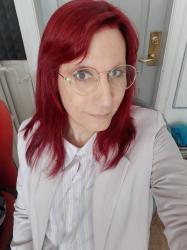Jewells Chambers is originally from Brooklyn, moved to Iceland in 2016, and has been very busy since then. She manages the website From Foreign To Familiar and runs the All Things Iceland podcast. A YouTube video she published with friend Tabitha Laker last September, “Living in Iceland as a Black Person – Our Personal Experiences”, has really been getting attention. Much of what they said resonated with people, both in Iceland and abroad, and it turns out there’s a lot that led up to the video’s creation.
Not a monolith
To be clear, Black people in Iceland, as anywhere else, are not a monolithic entity. They can hail from many different countries, classes and cultural backgrounds. At the same time, Jewells discovered that there are some commonalities of experience.
“Everyone’s experience is so different, but there are things a lot of people who reached out to me said they relate to,” Jewells tells us. “Like when you see another person of colour in Iceland, you get so excited because you know that there aren’t very many of you. Then there’s the questions from white Icelanders about your hair I think is really fascinating, although I think that gears more towards the female experience. And then there’s run-ins with comments that people will make.”
While Jewells says she has encountered ignorance in Iceland, as opposed to racism, not everyone has been that lucky. “When you experience this, you go through this thing where you’re trying to fit in in a new country, so you try and brush it off and think of the positive things you’re grateful for. Still, sometimes people will deliberately say things to try and hit you where they believe it will hurt the most.”
Dealing with it
“When people have asked me how I’m getting along in Iceland, I try and bring in something about my experience as a person of colour, because that’s a big part of my identity” Jewells says. “When I’m walking down the street, I want to be considered a regular person like everyone else, but the stares are real, and sometimes they’re much more prolonged than I think is OK. They might stare a little bit longer because they’re curious and they don’t realise what they’re doing, and it feels strange because you’re usually not getting a smile.”
Jewells says she prefers to deal with the ignorance she has encountered on a case by case basis. Sometimes this means trying to diffuse or dismiss the situation with a joke; other times it can mean confronting the ignorance directly. Either way, an internal struggle can often emerge.
“That’s the hardest part, because sometimes people who are victims of ignorance or racism assume it’s their fault, because you’re the one who’s different,” she says. “You’re part of the minority. So sometimes just my existence feels like I’m doing something wrong because people are so unaware of what it’s like to just exist as this person.”
Sharing the experience
The inspiration behind the YouTube video arose from Jewells wanting to read about the Black experience in Iceland, but finding the available material utterly lacking. While her friend Tabitha has been doing her own videos, she encouraged Jewells to do a collaborative work, and so they set about doing a video which would cover “the main things that could be particular points that Icelandic people have no idea affect people of colour here.” And this is just the tip of the iceberg—she does plan to cover the Black male experience, and the refugee experience, too.
The reactions have been overwhelmingly positive, due in part to the general racist awfulness going on in the US, which the rest of the world has been painfully aware of.
“I think that the US in particular is going through some really ridiculous stuff right now,” Jewells tells us. “Especially if you’re Other—whether you’re Mexican, or in the LGBT community, or Black—there are so many people whose existence is being threatened and their rights are being impugned upon, and Icelanders are seeing so much of this that they were more receptive of the video, so it actually ended up being a good time to put it out there.”
Be aware
In terms of what white Icelanders should be most of aware of when it comes to their interactions with people of colour, Jewells advises being sensitive, and putting yourself in other people’s shoes.
“I’d say the thing that immediately comes to mind is the staring part,” she says. “I think if you’re going to look at somebody, if you at least give them a smile, it immediately deactivates that sense of fight or flight. Be aware of yourself or how you might come across to the person you’re looking at who does look Other. Because in their mind, they are always aware that they’re the other person, because you’re surrounded by people who don’t look anything like you. Be sensitive to the fact that when we talk about being a person of colour, being Black, this is meaningful for us because there are so few of us in places like this. This has more to do with building a community and feeling like you can share experiences with other people.”
Buy subscriptions, t-shirts and more from our shop right here!
















